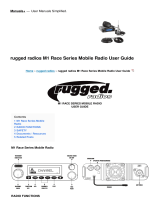
3
Table of Contents
SAFETY TRAINING INFORMATION.........................................................4
TRANSMITTER HAZARDS........................................................................5
SAFE DRIVING RECOMMENDATIONS...................................................6
GENERAL INFORMATION..........................................................................8
RELATED DOCUMENTATION..................................................................8
OPTIONS AND ACCESSORIES....................................................................9
VENDOR DROP SHIP OPTIONS................................................................9
External Headset Options..........................................................................9
HARDWARE KITS.....................................................................................10
USER SUPPLIED EQUIPMENT................................................................14
POWER CONSIDERATIONS....................................................................14
RF Power Adjustments ...........................................................................14
INSTALLATION............................................................................................17
TOOLS REQUIRED ...................................................................................17
EQUIPMENT INSTALLATION.................................................................17
Assembling & Installing the Weather Resistant Case Assembly.............17
Harley-Davidson Installation ..................................................................19
RADIO MOUNTING BRACKETS.............................................................19
CONTROL UNIT MOUNTING ...................................................................22
Control Unit And Mic Hanger Installation..............................................22
SPEAKER MOUNTING.............................................................................23
CABLE ROUTING......................................................................................26
Power and Control Cables.......................................................................26
Option Cable...........................................................................................26
Typical Harley-Davidson Installation .....................................................27
CABLE CONNECTIONS ...........................................................................31
Power Cable............................................................................................31
Control Cable..........................................................................................31
Ignition Switch Option............................................................................32
Accessory Cable......................................................................................32
ANTENNA INSTALLATION.....................................................................32
General....................................................................................................32
Typical Motorcycle Mount Antenna Installation ....................................34
FINAL CHECKS AND CONNECTIONS....................................................35
HEADSET INSTALLATION (OPTION)....................................................35
Headset Operation...................................................................................36






















